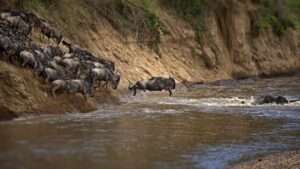
Visitors to Kenya’s national parks, reserves, and sanctuaries will begin paying revised conservation fees starting Wednesday, October 1, 2025, following the approval of new regulations by Parliament last week.
The Wildlife Conservation and Management (Access, Entry, and Conservation) (Fees) Regulations 2025, contained in Legal Notice No. 160 of 2025, introduce new charges for both local and international visitors across various protected areas.
For instance, non-resident adults will now pay USD 90 to access Amboseli and Lake Nakuru National Parks, while East African citizens will be charged Sh1,500.
Nairobi National Park fees have been set at USD 80 for non-residents and Sh1,000 for East Africans. The most expensive package covering Tsavo East, Tsavo West, and Amboseli will cost USD 215 for non-residents and Sh3,000 for East African citizens.Tourism and Wildlife Cabinet Secretary Rebecca Miano reassured the public that the government is committed to ensuring a seamless rollout of the new fees.
“Our Ministry is fully committed to guaranteeing a smooth and seamless implementation of the newly approved conservation fees,” she said.
Kenya Wildlife Service (KWS) Director General Prof. Erustus Kanga emphasized that visitors who had already booked and paid through the eCitizen platform before the announcement will not be affected.
“KWS will honor all eCitizen payments made before this announcement, and the revised fees will therefore apply only to new bookings made for 1st October onwards,” Prof Kanga confirmed.
He added that the fee adjustment comes after extensive consultations with stakeholders from conservation, tourism, and the general public, aimed at enhancing financial sustainability and improving visitor experience.
“The new regulations are designed to strengthen the financial sustainability of wildlife conservation, enhance visitor experiences, and ensure that Kenya’s parks and reserves remain globally competitive while safeguarding the country’s unique wildlife heritage,” he said.
The last review of conservation fees was undertaken 18 years ago, despite rising management costs and the expansion of Kenya’s tourism and conservation efforts.






